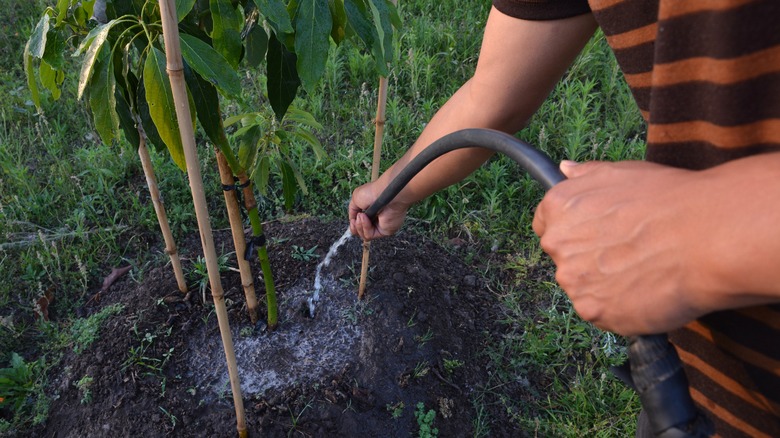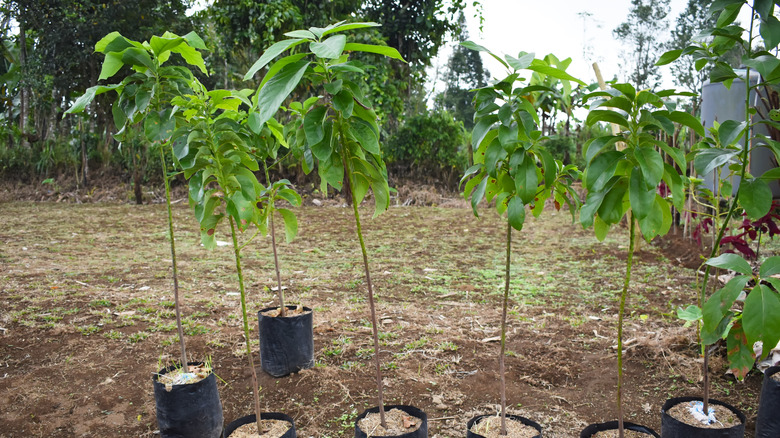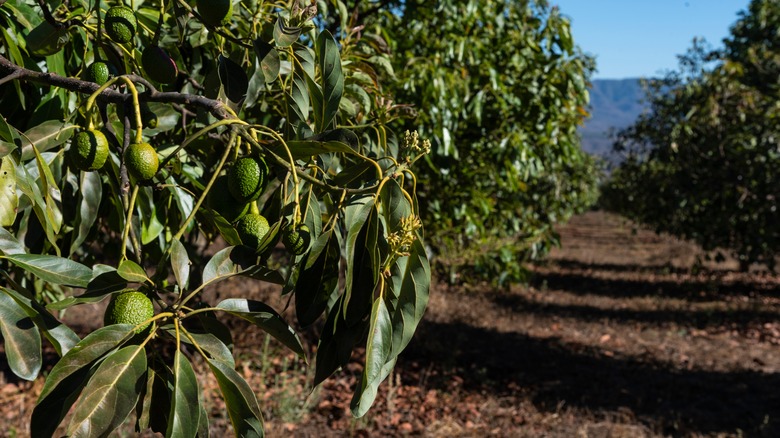How And When To Fertilize Your Avocado Tree
Beloved for their creamy fruits, avocado trees (Persea americana) require adequate fertilization to ensure a bountiful harvest. Optimally applying fertilizers underneath your avocado tree's drip line while avoiding its trunk helps neutralize soil deficiencies, promote root growth, yield flavorful fruits, and improve immunity against diseases and pests. However, deciding when to feed your avocado plants with fertilizers is a little tricky as it involves consideration of their maturity cycles, soil composition, and plant variety.
When newly planted, avocado trees should be fertilized three times a year, at the beginning of every season except for winters. As they grow and mature, the fertilization frequency can be reduced to once a year. After maturity (which typically takes twelve to fifteen years), avocado trees can be fertilized on an as-needed basis based on a soil test's results. Additional nitrogen support may need to be given through citrus fertilizers or organic compost. Further, if you're cultivating avocados in a low-rainfall area, opt for slow-releasing fertilizers to ensure better absorption.
How to fertilize avocado trees
You can fertilize your avocado tree through two methods: top dressing and soil drenching. Top dressing involves the removal of the mulch layer, followed by broadcasting the fertilizer around the tree's base (its drip line) while avoiding direct contact with its trunk. You can use a rake to avoid any fertilizer clumping. Follow up the application by watering the soil to improve absorption. This method is more suitable for early spring applications when your avocado trees are beginning to grow out.
In comparison, the soil drenching method involves adding water to the fertilizer and then spreading the solution across the tree's base. While this method allows for better coverage compared to top dressing, overfertilization can be extremely harmful to your tree's roots and can cause it to burn. Moreover, such potency saps the soil of moisture, reducing the amount of water available to roots for absorption, ultimately causing the tree leaves to turn brown.
When to fertilize avocado trees
Avocado fertilization patterns vary across maturity cycles. During the first year, young plants should be fed one tablespoon per tree of nitrogen-rich fertilizer at the start of spring, summer, and fall. No fertilizers should be applied during the winter as they can stimulate growth, leading to frost damage. In the subsequent years, nitrogen quantities should be raised by a ¼ pound across the three applications so that by year five, every avocado tree gets around one pound of nitrogen. This trend should persist until the avocado tree turns 12 and stabilizes thereafter.
However, you must tailor fertilizer applications to the plant variety. For instance, the Hass variety of avocados prefers nitrogen levels up to 2.9%, while the Fuerte variety needs levels of less than 2%. Additionally, natural fertilizers such as bloodmeal and manure can be used as a source of nitrogen for your avocado tree. Finally, if your soil tests highlight any zinc or iron deficiencies, they can be treated with separate fertilizers like zinc sulfate or chelated liquid iron.


